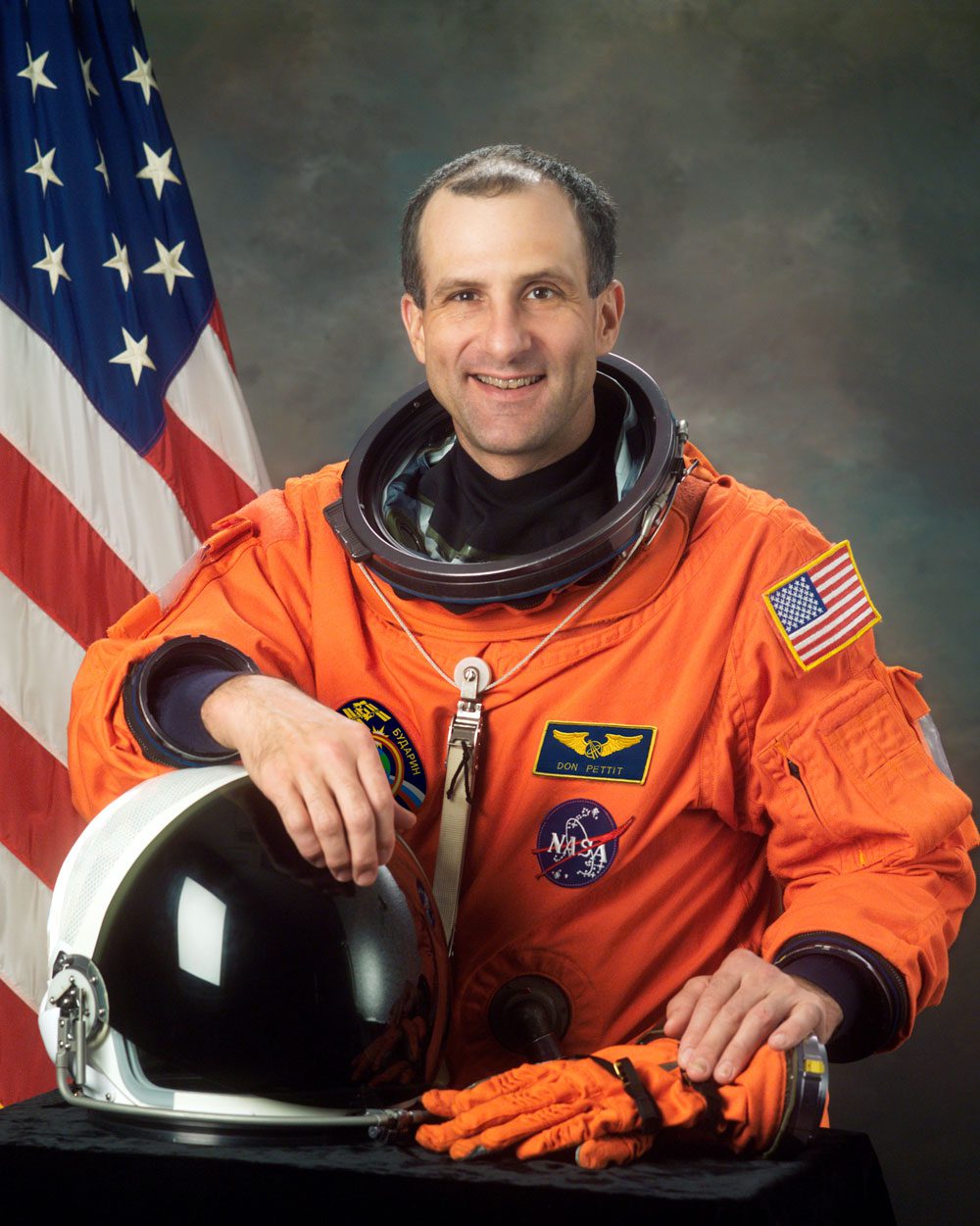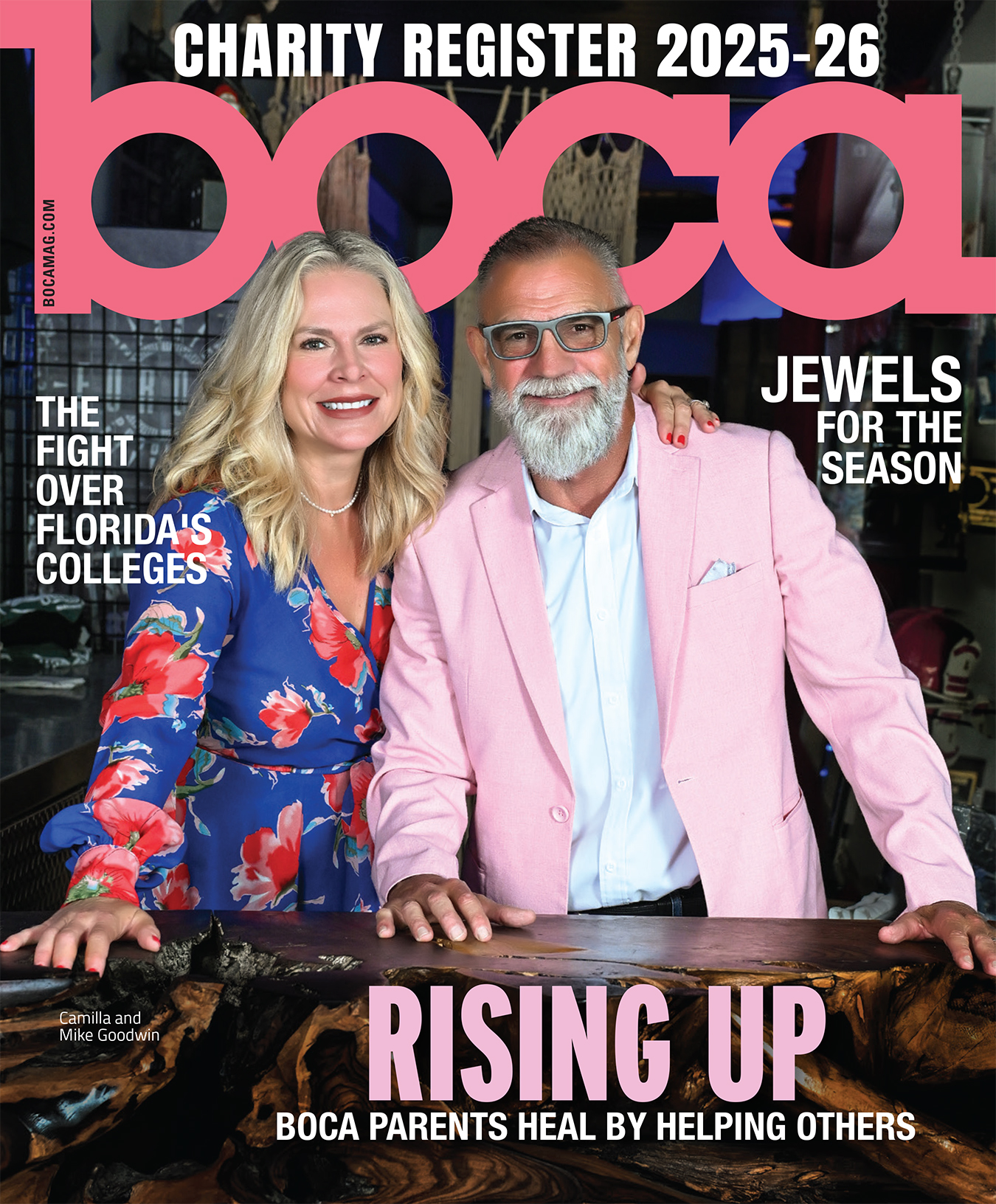For our March issue, I had the chance to interview NASA astronaut Donald Pettit, a veteran of three space missions, two spacewalks and a collective 159 days aboard the International Space Station. Pettit will speak about his experiences, and share his astounding photographs taken from his tenures in space, at “The View From Above” March 9 at Mizner Park Amphitheater, part of this year’s Festival of the Arts Boca.
In the meantime, enjoy these extra insights from my wide-ranging conversation with Pettit; below, we touch on interstellar cuisine, the Space Force, returning to the moon and more.
I’d like to start with the title of your presentation, The View From Above. How were you changed by viewing the earth from above?
Earth is an incredibly beautiful planet, either with your feet on the surface or when you’re in orbit or when you’re in an airplane. And we all have experience with our feet on the ground, and most of us have experience with flying in airliners at 30,000 feet, and there’s incredible beauty in that. And when you see Earth from space, it’s a different perspective. You see structure on the light scale of half a continent. It struck me as being beautiful but not more beautiful than what you can see with your feet on Earth. It’s just a different perspective. And since most people don’t get to see that, you go “this is great,” but the first time I stood at Lake Louise in Canada and looked up at all the glaciers and the mountains around there, it’s like, “wow, isn’t that great?” So I don’t think the magnitude of the wow is that much different than seeing some of these majestic things on Earth for the first time; it’s just a different perspective than what we’ve grown up to experience as creatures from the surface of this planet.
How’s the food on the ISS?
It’s like camping food. We’ve got a mix of freeze-dried food and the equivalent of military food, these meals ready to eat, where you’ll have basically the equivalent of canned meat, but it’s put in flexible pouches. It’s like a tuna fish pouch; instead of tuna fish in a can, in the store, you may have tuna fish in a pouch. And all our wet foods are pouched like that, and then we have our freeze-dried food that we inject water in. It’s perfectly fine food, it’s healthy food; it’s like being on an extended camping trip.
Did the food options get repetitive after a while, and is there anything you missed on Earth?
You have an eight-day menu, so every eight days you can eat the same thing … and you can mix and match. The Russians have their own meals, so we’ll do a lot of food trading back and forth between the Russian menu and the NASA menu. And if you’re lucky enough to fly with an international astronaut, like from Europe, they often have some very delectable European gourmet foods they bring up, and if you sweet-talk them, you might be able to trade your thermal-stabilized chunk of meatloaf for a foie gras.
As someone who grew up during the Cold War, was it strange to be working with Russians, who were drilled into your head as enemies?
No. The Russian people—this may be different from the government policies—but the people like Americans. And if you look at the wars where we really started shooting at each other, Russia and America fought on the same side—World War I, World War II. And the Cold War fortunately turned out to be saber rattling. So the Russian people don’t seem to have any quarrels with Americans, and when you get into the Russian space program, their engineers and trainers and cosmonauts are just as professional and just as focused on getting their job done as any of the engineers and astronauts at NASA. So working with the Russians, there’s cultural differences, but it’s really pleasurable to have the international character when working with the Russians. They are good colleagues to have when you are exploring space.
There was a time in our history, during the moonshot, when spaceflight captured the public imagination in a way that is maybe not the same with our endeavors in space today. What’s changed over the past 50 years or 60 years in terms of the public appreciation for space travel?
If you’re a techno uber geek, and I proudly proclaim myself as that, there’s no lack of interest in the American public or the worldwide public for flying in space. It might not be as much of a headline news item now, but when I go out giving talks, I see no ebbing interest in human spaceflight. If anything, I see it picking up, particularly with the development of commercial rocketry and private astronauts that can fly in space. I think the interest is becoming even greater, because the public can, at least in concept, say, “I too can fly in space.”
Returning to the moon is going to perk up public interest, because this time we’re going to the moon to build a lunar base. It’s not going to the moon to take geographic and scientific samples and take measurements and come home; it’s going to be some science, but it’s primarily going to be emphasizing building the lunar base.
What timeline do you see for all of this?
It’s going to take a while. If you look at Space Station, it took 10 to 15 years to design it, and then 15 years to build it in space. It’s been running at capacity, fully assembled, for five or six years, even though it’s been up there, crewed, for 20 years. Any kind of endeavor like this takes a while to do. So initially it looks like we’re going back to the moon with humans in the 2025 time period, and we’re doing the design work right now for the spacecraft and infrastructure to build the lunar base. And it’s going to take a while to get the design work down, and cut the metal, and get it to the moon and put it all together.
Will this process be broadcast to the public?
We’re planning to have 4K real-time video coming down from the moon, and the array of cameras, both fixed to the spacecraft and handheld that the crew could use, will be as modern as we can have, and can work in the radiation environment.
What’s your opinion on the Space Force as the latest branch of the military, because it’s suggestive of a threat; is there a threat out there requiring us to have a space defense?
I really don’t know. I think if you look at the early period of aviation from a military point of view, it was the Army Air Corps, in WWI and WWII. It wasn’t until well after WWII that it was decided that the Air Force needed to split from the Army because it had a different direction it needed to go in. It looks like that is happening now. I’m not privy to the information that was used to make this decision, but it seems to be a natural progression in terms of how we use new technology for our military defense.
Pettit will speak at 7 p.m. March 9 at Mizner Park Amphitheater, 590 Plaza Real, Boca Raton. Tickets cost $35, or $10 for virtual tickets. Visit festivalboca.org.
This Web Extra was inspired by the March 2022 issue of Boca magazine. For more content like this, subscribe to the magazine.







